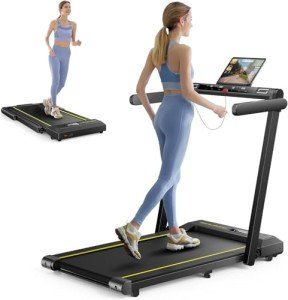The Benefits of Using Treadmill Incline: Elevate Your Workout
When it comes to taking full advantage of exercise effectiveness, numerous physical fitness enthusiasts typically overlook one efficient yet easy tool: the incline function on a treadmill. Whether you're a skilled runner or a novice looking for an efficient way to improve cardiovascular physical fitness, incorporating incline into your treadmill routines can substantially improve your workout experience. This article explores the significance of treadmill incline, its benefits, usage pointers, and answers to frequently asked questions.
What is Treadmill Incline?
Treadmill incline refers to the angle at which a treadmill's running surface rises. Many contemporary treadmills come with adjustable inclines that allow users to imitate walking or running uphill. The incline can usually be set anywhere from 0% (flat) to as high as 15% or more, depending upon the design. This feature can provide users with a more difficult workout that simulates outside terrain conditions.
Benefits of Using Treadmill Incline
Making use of treadmill incline uses a myriad of advantages for individuals intending to boost their fitness levels. Some of the key advantages include:
1. Increased Caloric Burn
One of the most significant advantages of integrating incline workouts is the capacity for increased calorie expenditure. When you walk, jog, or work on an incline, your body works harder to conquer gravity. This causes a greater metabolic rate and, therefore, greater calorie burn compared to exercising on a flat surface.
- Research studies suggest incline training can burn up to 50% more calories than a workout on a flat treadmill.
2. Enhanced Muscle Engagement
Incline workouts engage different muscle groups compared to flat running. Particularly, they target:
- Calves
- Hamstrings
- Glutes
- Quads
This enhanced engagement can result in enhanced muscle tone and strength with time, contributing to better total fitness.
3. Decreased Impact on Joints
For those with joint problems or those recovering from injury, running on an incline can be gentler compared to running on flat surface areas. Home Treadmills shifts a few of the impact far from the knees and lower back, using a more forgiving running surface area.
Tips for Reduced Impact:
- Start with a gentle incline (1-3%) before gradually increasing.
- Use an appropriate warm-up to prepare the joints.
4. Enhanced Cardiovascular Fitness
Incline workouts tend to elevate heart rates more than flat treadmill exercises. This can result in enhancements in cardiovascular health in time.
- High-intensity interval training (HIIT) with incline can be especially reliable for enhancing cardiovascular strength.
5. Replicating Outdoor Environments
Incline training enables treadmill users to duplicate the conditions of outside terrains, assisting to prepare for roadway races or path running. This can improve endurance and adaptability to numerous running conditions.
How to Use Treadmill Incline Effectively
To optimize the advantages of treadmill incline exercises, consider the following standards:
- Warm-Up:Begin with a steady warm-up on a flat surface area for 5-10 minutes to prepare your muscles.
- Start Low:If you're new to incline training, start with a 1-3% incline. As you acquire strength and self-confidence, gradually increase the incline for more difficulty.
Integrate Intervals:To raise exercise strength, alternate in between periods of flat running and greater incline intervals.
- Example Routine:
- 5 minutes flat (0%)
- 3 minutes incline (5-10%)
- 5 minutes flat (0%)
- Repeat the cycle.
- Proper Form:Maintain great posture by standing tall, engaging your core, and not leaning excessively into the incline.
- Cooldown:Always conclude your exercise with a cooldown period on a flat treadmill to allow your heart rate to slowly go back to regular.
Frequently Asked Questions about Treadmill Incline
1. Is an incline of 15% too steep for beginners?
While 15% can be tough, novices must start at a lower incline (1-3%) and slowly increase as they end up being more comfortable and develop strength.
2. How often should I integrate incline workouts?
For best results, think about integrating incline workouts into your routine 1-3 times weekly, depending upon your overall fitness objectives and levels.
3. Can using incline assist with weight reduction?
Yes, incline exercises can considerably improve your calorie burn, making weight reduction more possible when coupled with correct nutrition.
4. Should I utilize incline workouts each time I walk or run?
While incline exercises are beneficial, alternating in between flat and inclined sessions can help prevent overuse injuries and keep exercises varied.
5. Is it safe to work on an incline for long periods?
Typically, yes, but it is necessary to listen to your body. If you start to feel discomfort or pain, lower the incline or offer your body a rest.
Including treadmill incline is an uncomplicated yet efficient way to elevate fitness regimens. It uses various benefits, from increased calorie burn and muscle engagement to enhanced cardiovascular health. By implementing the pointers described above, individuals can enjoy a more varied exercise routine that satisfies their fitness goals and improves their overall wellness. Whether going for weight loss, muscle toning, or endurance structure, the incline function on treadmills can pave the method to a more efficient physical fitness journey.

